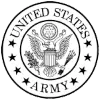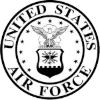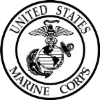Available 24/7
Professional Instruction
Free Training Materials






Course Details
The AZ-300: Azure Architect-Technologies course is a 5-day course that is designed to teach students how to manage their Azure resources, including deployment and configuration of virtual machines, virtual networks, storage accounts, and Azure AD that includes implementing and managing hybrid identities.
The course will explore the following key areas: Deploying and Configuring Infrastructure, Implementing Workloads and Security, Understanding Cloud Architect Technology Solutions, Creating and Deploying Apps, and Developing for the Cloud.
Specific Topics covered in the course include:
- Managing Azure Subscriptions and Resources
- Implementinging and Managing Storage
- Deploying and Managing VMs
- Configuring and Managing Virtual Networks
- Managing Identities using Azure Active Directory
- Evaluating and Performing Server Migration to Azure
- Implementinging and Managing Application Services
- Implementinging Advanced Virtual Networking.
- Securing Identities using Azure AD.
- Designing and Connectivity Patterns
- Hybrid Networking
- Addressing Durability of Data and Caching
- Measuring Throughput and Structure of Data Access
- Using shell commands to create an App Service Web App
- Creating Background Tasks
- Using Swagger to document an API
- Creating a reliable service
- Creating a Reliable Actors app
- Hands-on with Reliable collections
- Understanding the Azure Container Registry
- Using Azure Container instances
- Understanding how to Implement authentication using certificates, Azure AD, Azure AD Connect, and tokens.
- Implementing Role-aBsed Access Control (RBAC) authorization.
- Implementing secure data for end-to-end encryption.
- Implementing secure data for implementing SSL and TLS communications.
- Using Azure Key Vault to manage cryptographic keys.
- How to configure a message-based integration architecture
- Understanding how to Develop for Asynchronous Processing
- Begin creating apps for Autoscaling
- Understanding Azure Cognitive Services Solutions
Target Student:This course is intended for Cloud Solutions Architects.
Students should have the following prerequisite experience:
- Practical experience with operating systems.
- Experience with virtualization
- Experience with cloud infrastructure
- Experience with storage structures
- Experience with billing and networking.
AZ-300T01: Deploying and Configuring Infrastructure
Section 1: Managing Azure Subscriptions and Resources
In this section you will explore Azure monitoring capabilities using Azure alerts, Azure activity logs, and Log Analytics. You will learn to query, analyze, and interpret the data viewed in Log Analytics.
Section 2: Implementing and Managing Storage
In this section you will learn about Azure storage accounts, data replication, how to using Azure Storage Explorer, and monitor storage.
Section 3: Deploying and Managing Virtual Machines (VMs)
In this section you will learn how to do the following: • Create Virtual Machines (VM)s within the Azure Portal • Create Virtual Machines (VM)s using Azure PowerShell • Create Virtual Machines (VM)s using ARM templates • Deploy Linux Virtual Machines (VM)s • Monitor Virtual Machines (VM)s Additionally, you will learn how to protect data using backups at regular intervals, whether by snapshot, Azure Backup, or Azure Site Recovery.
Section 4: Configuring and Managing Virtual Networks
In this section you will create and implement virtual networks using the Azure Portal as well as Azure PowerShell and CLI. You will receive and overview on how to assign IP addresses to Azure resources to communicate with other Azure resources, your on-premises network, and the Internet.
Topics :
Network routing using routing tables and algorithms
Inter-site connectivity using VNet-to-VNet connections and VPNs
Virtual network peering for regional and global considerations
Gateway transit
Section 5: Managing Identities
this section covers Azure Active Directory (Azure AD) for IT Admins and Developers with a focus on the Azure AD multi-tenant cloud-based directory and identity management service.
Topics :
Role-Based Access Control (RBAC)
built-in roles
Self-Service Password Reset (SSPR)
authentication methods for password reset
AZ-300T02: Implementing Workloads and Security
Section 1: Evaluating and Performing Server Migration to Azure
this section covers migrating workloads to a new environment, whether it be another datacenter, or to a public cloud, and setting clear goals for the migration. Goals include both technology-focused and business-focused goals for migrations, and the benefits to an organization’s business. Activities include components of the Azure migration process: Create a project, Create a collector, assessing readiness, and estimating costs. Additionally, you will receive and overview of Azure Site Recovery (ASR) that includes and end-to-end scenarios.
Section 2: Implementing and Managing Application Services
this section includes the following topics:
Deploying Web Apps
Managing Web Apps
App Service Security
Serverless Computing Concepts
Managing Event Grid
Managing Service Bus
Managing Logic App
Section 3: Implementing Advanced Virtual Networking
this section includes the following topics:
Azure Load Balancer
Azure Application Gateway
Site-to-Site VPN Connections As well as an overview of ExpressRoute which allows companies to extend on-premises networks into the Microsoft cloud over a dedicated private connection facilitated by a connectivity provider.
Section 4: Securing Identities
this section includes the following topics with an emphasis on identity and roles:
Azure AD Identity Protection
Azure Domains and Tenants
Azure Users and Groups
Azure Roles As well as an overview of Azure AD integration options that focuses on Azure AD Connect to integrate on-premises directories with Azure Active Directory.
AZ-300T03: Understanding Cloud Architect Technology Solutions
Section 1: Selecting Compute and Storage Solutions
this section includes the following topics:
Azure Architecture Center
Cloud design patterns
Competing consumers pattern
Cache-aside pattern As well as sharding patterns to divide a data store into horizontal partitions, or shards. Each shard has the same schema but holds its own distinct subset of the data.
Section 2: Hybrid Networking
this section includes the following topics:
Site-to-site connectivity
Point-to-site connectivity
Combining site-to-site and point-to-site connectivity
Virtual network–to–virtual network connectivity As well as connecting across cloud providers for failover, backup, or even migration between providers such as AWS.
Section 3: Measuring Throughput and Structure of Data Access
this section includes the following topics:
DTUs – Azure SQL Database
RUs – Azure Cosmos DB
Structured and unstructured data
Using structured data stores
AZ-300T04: Create and Deploying Apps
Section 1: Create Web Applications using PaaS
this section provides and overview of Azure App Service Web Apps for hosting web applications, REST APIs, and a mobile back end. Topics include the following:
Using shell commands to create an App Service Web App
Create Background Tasks
Using Swagger to document an API As well as an explanation of how Logic Apps help to build solutions that integrate apps, data, systems, and services across enterprises or organizations by automating tasks and business processes as workflows.
Section 2: Create Apps and Services Running on Service Fabric
this section provides an overview of Azure Service Fabric as a distributed systems platform that makes it easy to package, deploy, and manage scalable and reliable microservices and containers. this section also addresses the challenges in developing and managing cloud native applications. Additional topics include:
Create a reliable service
Create a Reliable Actors app
Working with Reliable collections
Section 3: Using Azure Kubernetes Service
this section focuses on the AzureKubernetes Service (AKS) for deploying and managing a Kubernetes cluster in Azure. Topics include how to reduce operational overhead of managing Kubernetes by offloading much of that responsibility to Azure, such as health monitoring and maintenance. Additional topics include:
Azure Container Registry
Azure Container Instances
AZ-300T05: Implementing Authentication and Secure Data
Section 1: Implementing Authentication Topics for this section include:
Topics :
Implementing authentication in applications (certificates, Azure AD, Azure AD Connect, token-based)
Implementing multi-factor authentication
Claims-based authorization
Role-based access control (RBAC) authorization
Section 2: Implementing Secure Data
Topics :
End-to-end encryption
Implementing Azure confidential computing
Implementing SSL and TLS communications
Managing cryptographic keys in Azure Key Vault
AZ-300T06: Developing for the Cloud
Section 1: Developing Long-Running Tasks and Distributed Transactions
Topics for this section include:
Implementing large-scale, parallel, and high-performance apps using batches
HPC using Microsoft Azure Virtual Machines
Implementing resilient apps by using queues As well as, implementing code to address application events by use webhooks. Implementing a webhook gives an external resource a URL for an application. The external resource then issues an HTTP request to that URL whenever a change is made that requires the application to take an action.
Section 2: Configuring a Message-Based Integration Architecture
Topics :
Configure an app or service to send emails
Configure an event publish and subscribe model
Configure the Azure Relay service
Configure apps and services with Microsoft Graph
Section 3: Develop for Asynchronous Processing
Topics :
Implement parallelism, multithreading, and processing
Implement Azure Functions and Azure Logic Apps
Implement interfaces for storage or data access
Implement appropriate asynchronous computing models
Implement autoscaling rules and patterns
Section 4: Develop for Autoscaling
Topics :
Implement autoscaling rules and patterns
Implement code that addresses singleton application instances
Implement code that addresses a transient state
Section 5: Develop Azure Cognitive Services Solutions
Topics :
Develop Solutions using Computer Vision
Develop solutions using Bing Web Search
Develop solutions using Custom Speech Service
Develop solutions using QnA Maker
Please check the course description to find prerequisite information.
AZ-300: Azure Architect-Technologies
On-Demand Training Course
180/month licence
- 24/7 Access
- Hands-On Practice Exercises
- Free Repeats
- Professional Instruction
Testimonials
This was the class I needed.
The instructor Jeff took his time and made sure we understood each topic before moving to the next. He answered all of our questions, and I don't know about the rest of the students, but was very pleased with this experience.
I finally understand how to use Excel.
-Amanda T (Yale New Haven Hospital).
Great class!
We were able to cover a lot of information in one day without getting overwhelmed.
-Maria R (Microsoft).
Free Repeats
Learn At Your Pace
No Travel
Professional Instruction
Affordable Pricing
Group Discounts

